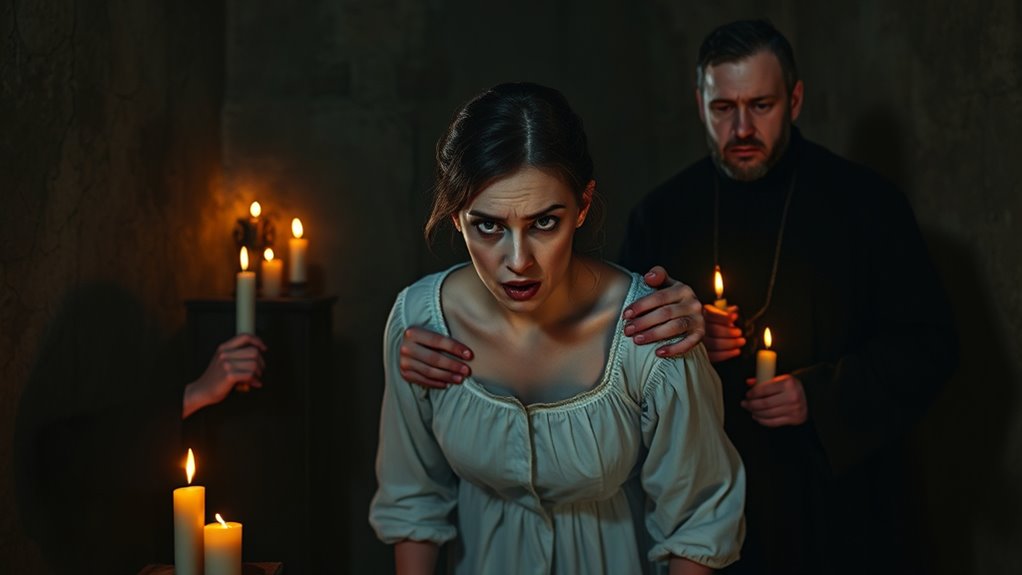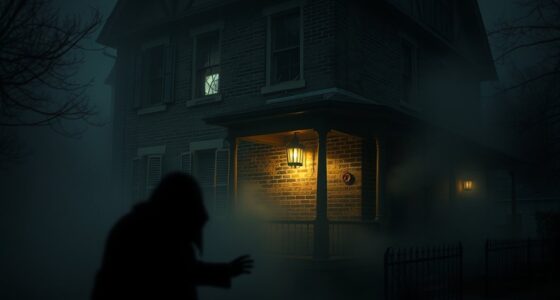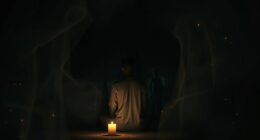The exorcism of Anneliese Michel is a tragic case where her family and priests believed she was possessed by evil spirits, leading to multiple intense rituals. These exorcisms included prayers, commands, and physical restraints, but unfortunately, her condition worsened, resulting in her death. It highlights the dangerous overlap between faith and mental health, raising ethical concerns. To understand more about what happened and the broader implications, there’s much more to explore.
Key Takeaways
- Anneliese Michel underwent multiple exorcisms due to believed demonic possession, which contributed to her physical and mental decline.
- The case highlights the conflict between religious rituals and mental health treatment, raising ethical concerns.
- Supporters saw the exorcisms as spiritual salvation, while critics argued they were harmful and neglectful of medical care.
- Her death sparked debates about the legitimacy of exorcisms and the importance of mental health awareness.
- The case remains a cautionary tale about the dangers of conflating faith with scientific understanding.

The exorcism of Anneliese Michel stands as one of the most infamous and controversial cases of alleged demonic possession in modern times. You might wonder how someone can be convinced that a person is possessed by demonic forces, but in Anneliese’s case, her behaviors and symptoms seemed to point toward something beyond natural explanation. She experienced severe physical and psychological symptoms—vomiting, screaming, and violent outbursts—that her family and priests believed were signs of demonic possession. The church’s intervention aimed to free her from what they saw as an evil influence, but the process was far from simple. Instead of immediate relief, her condition worsened over time, leading to a series of exorcisms that stretched over several months. To her supporters, these rituals represented a path toward spiritual liberation, an opportunity to rid her soul of darkness. But critics argue that these exorcisms caused more harm than good, raising questions about the thin line between faith and harm.
As you explore her story, it becomes clear that the core of her ordeal was her family’s and clergy’s unwavering belief in demonic possession. They believed that Anneliese was not merely mentally ill but possessed by malevolent spirits that needed to be expelled through traditional exorcism rites. It’s important to recognize that for many involved, these rituals symbolized hope and spiritual liberation, a chance to save her soul from eternal damnation. Yet, her physical and mental deterioration during the exorcisms revealed the potential dangers of such practices. The exorcisms, which involved intense prayers, commands for the demons to leave, and physical restraint, ultimately contributed to her tragic death. Her case highlights the complex intersection of faith, mental health, and the desire for spiritual liberation, raising profound ethical questions. Additionally, her story emphasizes the importance of understanding the mental health aspects that can be mistaken for spiritual affliction. Recognizing mental health symptoms early can help prevent tragic outcomes and ensure appropriate care. Moreover, the role of mental health awareness in distinguishing between spiritual and psychological issues is crucial for safeguarding vulnerable individuals.
You may feel conflicted when considering her story. To some, it epitomizes the power of faith to combat evil, while to others, it exposes the peril of mistaking mental health issues for demonic possession. Her death prompted widespread debate about the legitimacy of exorcisms and the importance of mental health care. Anneliese’s case has become a symbol of the dangerous consequences that can arise when spiritual beliefs overshadow scientific understanding. Whether you see her story as a tragic misunderstanding or a cautionary tale, it underscores the importance of balancing faith with compassion and medical insight. Ultimately, her story remains a haunting reminder of the fine line between spiritual liberation and harm. Recognizing the signs of mental health issues is crucial to prevent similar tragedies in the future.
Frequently Asked Questions
Was Anneliese Michel Ever Officially Declared Possessed by the Church?
You might wonder if the Church ever made an official declaration of possession. The Church did not give a formal acknowledgment or official declaration that Anneliese Michel was possessed. Instead, her case was investigated, and her behavior was attributed to mental illness by medical and church authorities. While she underwent exorcisms, there was no official recognition of possession by the Church, leaving the question of her condition open to interpretation.
What Were the Long-Term Psychological Effects on Anneliese After the Exorcism?
You wonder about the long-term psychological effects on Anneliese after the exorcism. Post-trauma, she experienced severe psychological distress, including depression, anxiety, and seizures. The intense spiritual and physical ordeal left her with lasting emotional scars, affecting her daily life. Her case highlights how such traumatic religious experiences can lead to significant mental health struggles, emphasizing the importance of proper psychological support after traumatic events.
Did Any Legal Actions Result From Anneliese Michel’S Exorcism Incident?
Legal lessons arose from this tragic tale, prompting serious scrutiny. You might wonder if the exorcism led to legal ramifications or church investigations. Authorities examined whether negligence played a role, and the church faced questions about its involvement. These legal actions aimed to address accountability, ensuring that such spiritual services follow proper procedures. Ultimately, the incident sparked significant legal and ecclesiastical inquiries, highlighting the importance of regulation and responsibility in religious rites.
Were There Any Alternative Treatments Considered Before the Exorcism?
You might wonder if any alternative therapies or medical interventions were considered before the exorcism. In this case, the involved parties primarily focused on religious rituals, but some might argue that psychological or psychiatric treatments could have been explored. Medical professionals often recommend alternative therapies or interventions for mental health issues, yet in this situation, the emphasis was on spiritual methods rather than seeking out medical or psychological solutions first.
How Did the Exorcism Influence Modern Catholic Exorcism Practices?
Think of the current question as a bridge connecting past and present. Your understanding of historical context and ritual procedures reveals that modern Catholic exorcism practices are shaped by past events, like the exorcism of Anneliese Michel. It prompted the church to refine procedures, emphasizing careful discernment and spiritual authority, ensuring exorcisms today are more structured, respectful, and rooted in tradition, while balancing compassion with doctrinal rigor.
Conclusion
Just as a candle’s flame can flicker and struggle against the dark, your beliefs and doubts can battle within you. Anneliese’s story reminds you that sometimes, the darkness isn’t just outside, but inside your mind and spirit. It’s up to you to choose whether to let that darkness consume you or to find the light within. Remember, even in the deepest shadow, a single spark of hope can ignite a new beginning.









